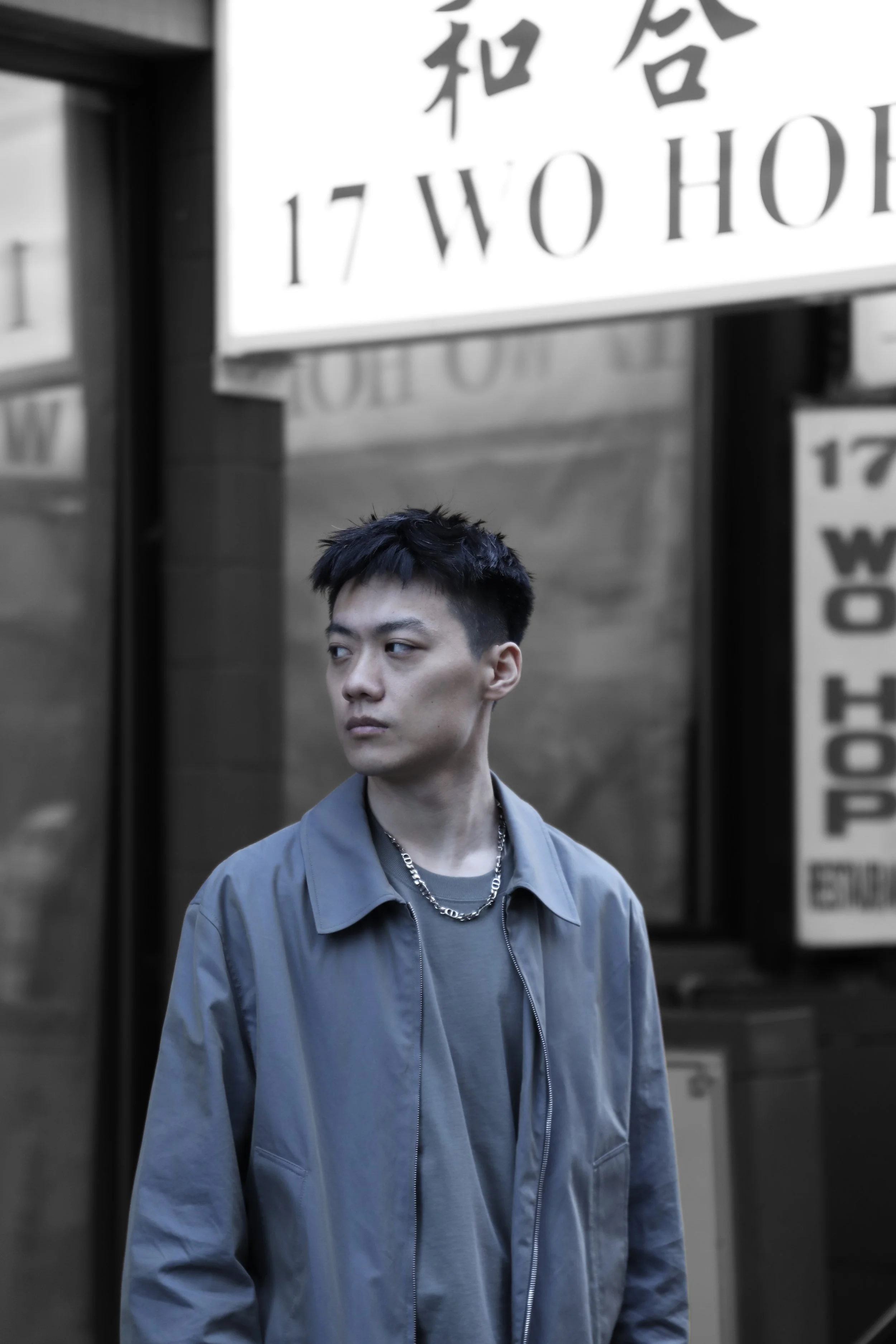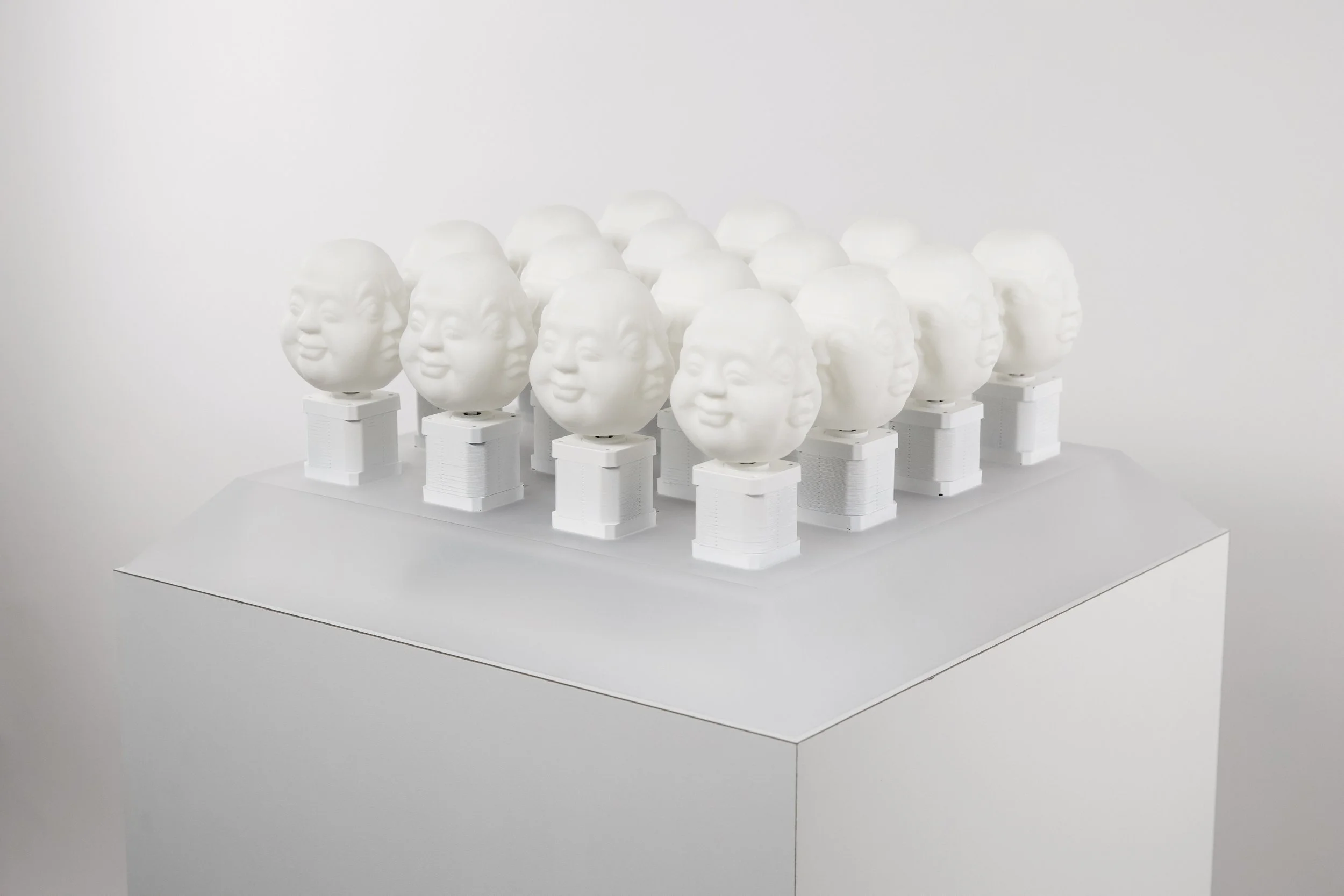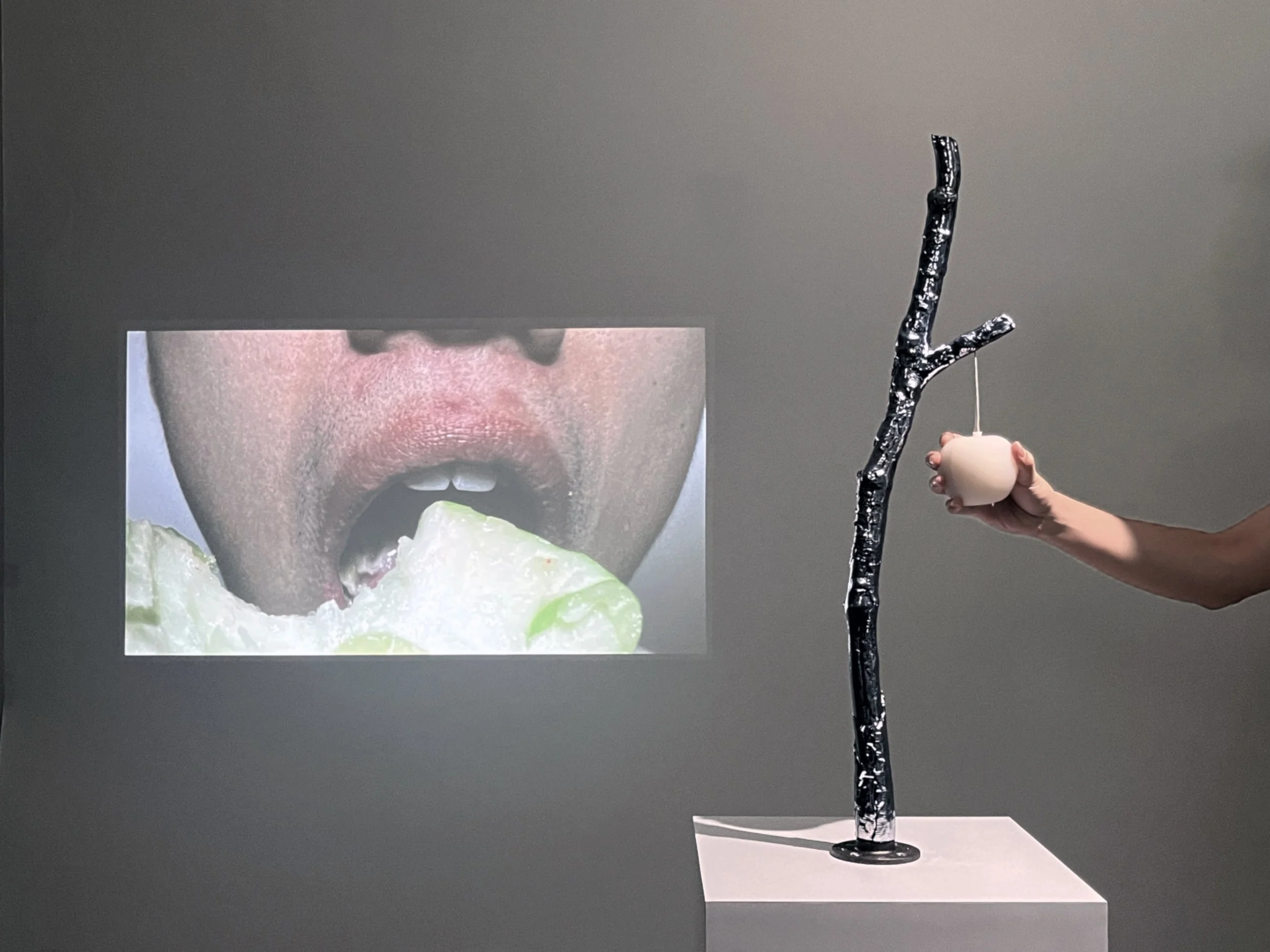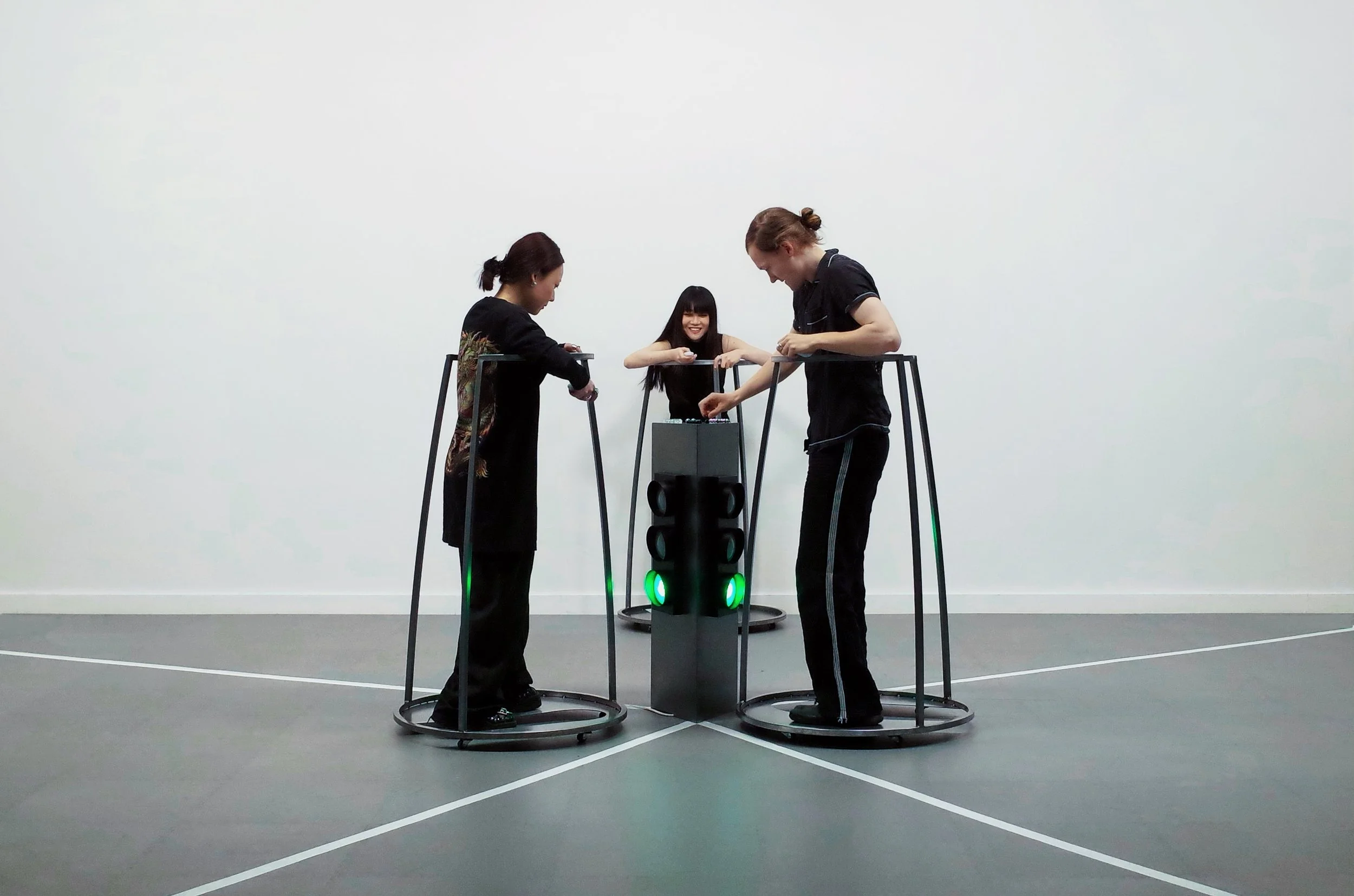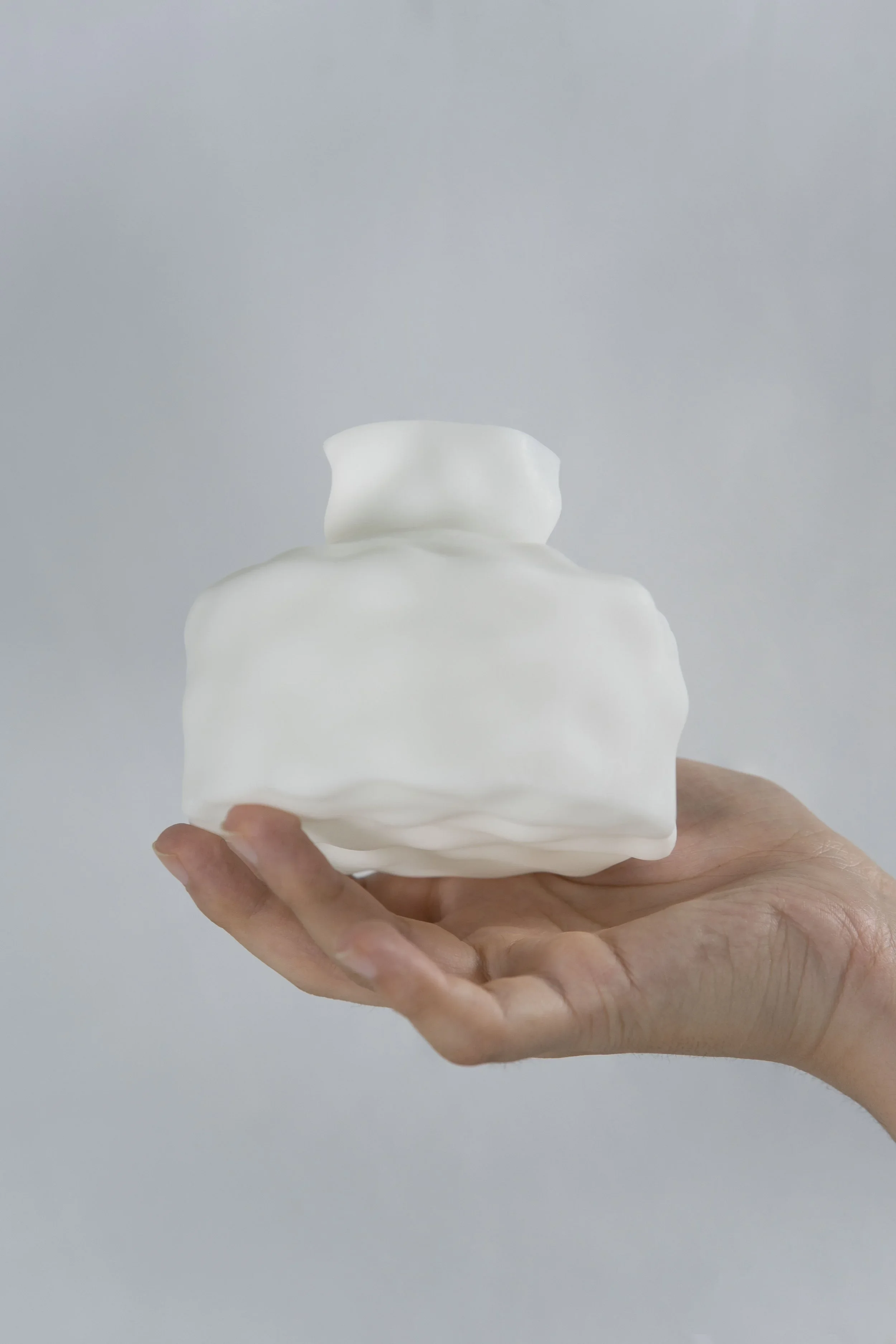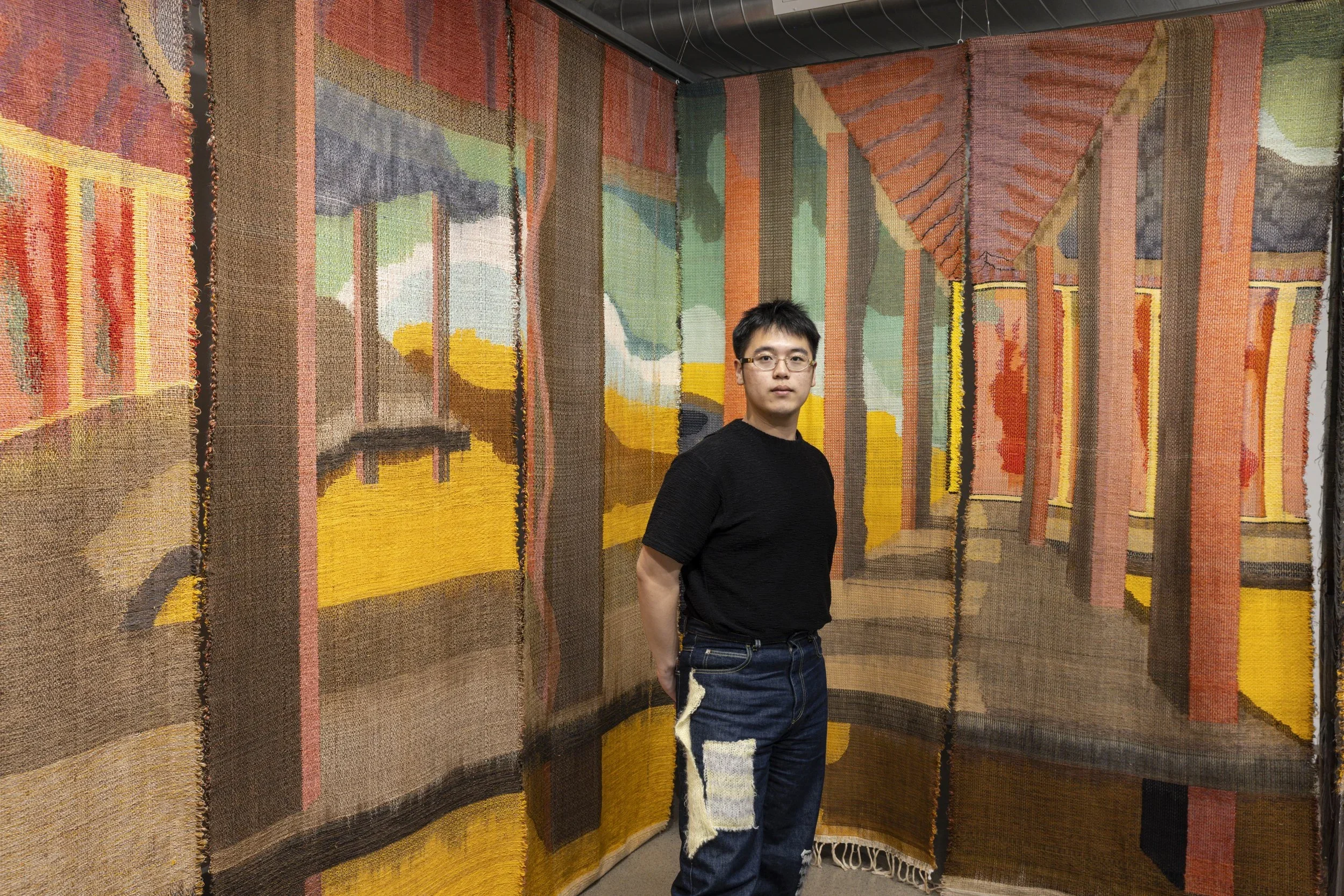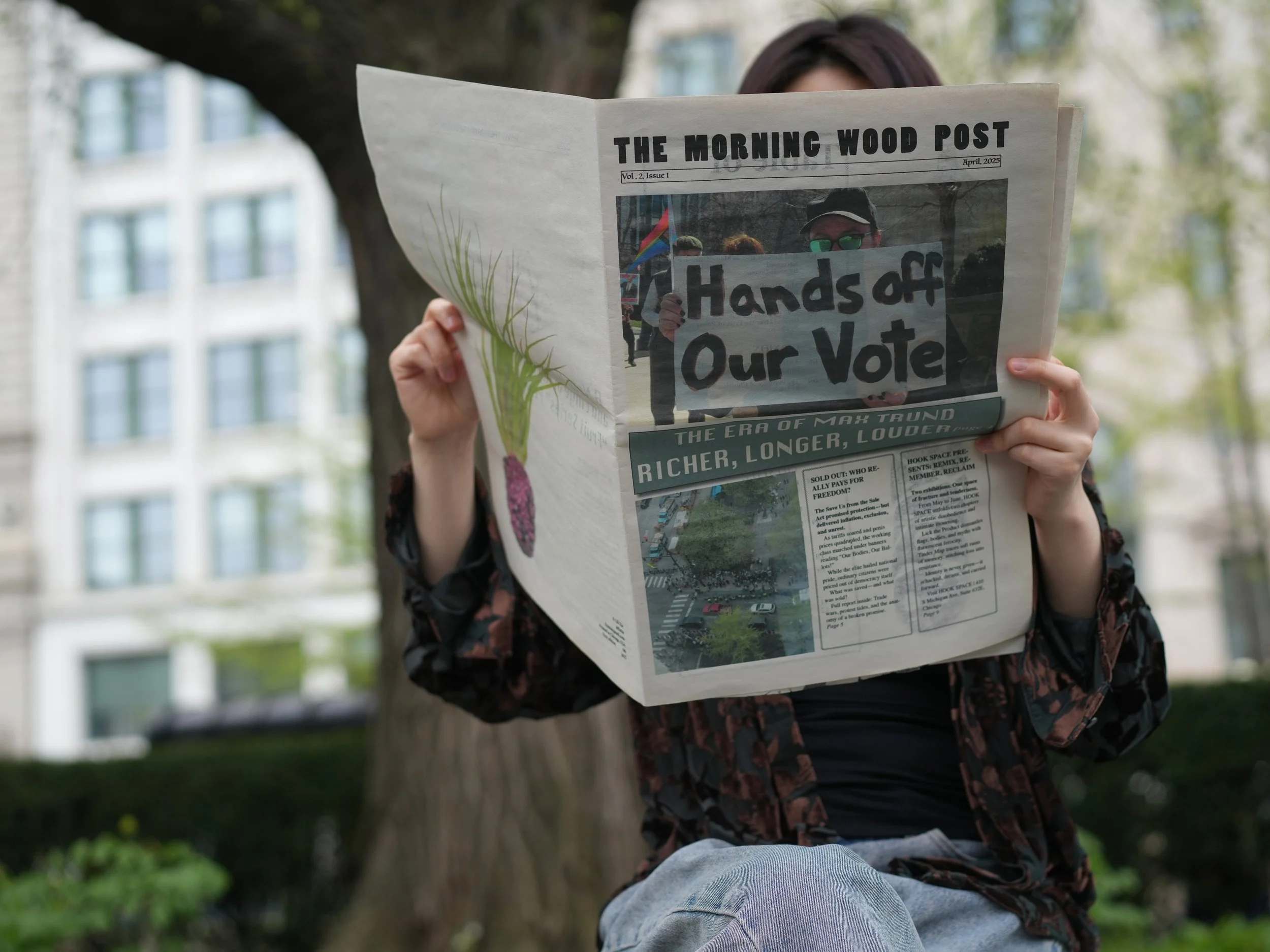10 Questions with Ziggy Yang
Al-Tiba9 Art Magazine ISSUE19 | Featured Artist
Ziggy (Zhenglong) Yang is a Chinese installation and new media artist based in New York. His practice explores the complex dialogue between human emotions, cultural conditioning, and technology, positioning technology as both an interactive medium and a conceptual framework.
Influenced by his upbringing in Xi’an, China, an environment deeply shaped by Eastern traditions emphasising emotional restraint, collective harmony, and Taoist and Buddhist philosophies. Yang employs mechanical systems, programmable physical computing, artificial intelligence, and synthetic materials as both medium and metaphor, constructing installations that engage viewers in active reflection on the relationship between the self and the surrounding social and technological environment.
Ziggy Yang - Portrait
ARTIST STATEMENT
Ziggy’s work investigates how identity, memory, and emotional experience are shaped by the cultural, technological, and spatial systems we inhabit. Moving beyond personal narratives of emotional restraint and conformity, Yang’s recent practice focuses on broader questions of how both visible and invisible structures mediate contemporary life. Through installations that range from interactive environments to kinetic and spatial experiences, he invites viewers to engage with these dynamics on both perceptual and conceptual levels, prompting reflection on how human presence and behaviour are continuously negotiated within constructed environments.
Compliment Machine, Custom Software (Image to text AI, Text to speech AI), Single-board computer, Camera, Megaphone, ABS Plastic, 25x16x28 cm, 2025 © Ziggy Yang
AL-TIBA9 ART MAGAZINE ISSUE19
Get your limited edition copy now
INTERVIEW
First of all, introduce yourself to our readers. Who are you, and how did you first get interested in art?
My name is Zhenglong Yang, though most people call me Ziggy. I am an installation artist whose practice centres on experimental explorations of medium as both material and interface. My artistic path began while I was studying interior design at Pratt Institute. I noticed that my interior projects consistently drifted away from functionality, transforming into conceptual installations. This realisation led me to reconsider my direction, and I ultimately committed fully to installation art as a discipline where I could merge material research with conceptual expression.
You grew up in Xi'an, a city rich in cultural heritage and tradition. How do those early influences continue to shape the way you approach themes like identity or emotional expression?
My early years in Xi'an shaped the foundation of my practice. Living in New York now, distant from the family and social structures that once defined me, allows me to examine those influences with greater clarity. Many of my works grew out of feelings of emotional restraint, collectivism, and order that marked my upbringing. I often translate these experiences into spatial arrangements, repeated forms, or material enclosures, as if reconstructing the invisible frameworks I once inhabited. Creating such works has provided me with a vital outlet to confront those forces and transform them into tangible form.
© Ziggy Yang
You later moved to New York, where you currently live and work. How does this different environment shape your approach to art? What is one thing you learned from living and working there?
When I first arrived in New York in 2019 to study at Pratt, the culture shock was intense. Over time, I learned to engage more openly with critique and dialogue, and to let iterative feedback inform how I move from concept to public presentation. That shift continues to influence how I approach projects today.
Your work sits at the intersection of emotion, culture, and technology. What initially drew you to use technological systems as expressive tools?
I think my early education played a big role. My undergraduate degree was in mechanical engineering, so I've always understood how machines work. Later, studying interior design taught me about space and materials. When I began making installations, it felt natural to inherit and merge those experiences. You can see traces of both engineering and design in my practice.
Many of your installations involve programmed or kinetic elements. What does your process look like from the initial concept to building a working system?
My process always begins with an emotion or psychological state. I ask myself what triggered it, where it comes from, and how it might be translated into form. From there, I move into prototyping to test interaction and behaviour. I refine the underlying system so it remains stable and coherent, develop the physical components to suit the installation context, and iterate through testing until the technology becomes unobtrusive. In my practice, technology is never the endpoint; it is the structure that enables an emotion to take shape.
© Ziggy Yang
© Ziggy Yang
Your installations often require viewer interaction. What kind of emotional or psychological response do you hope to spark in those who experience your work?
Although my starting point is usually personal, I do not want to impose a fixed interpretation on the audience. Instead, I want to create open-ended situations where viewers bring their own histories and emotions. Some might experience calm, others tension or unease, depending on how they engage with the work. I pay attention to how people choose to linger, return, or move in relation to the installation, and those responses help me refine the atmosphere I want to create.
How do you think artificial intelligence, as both a medium and a symbol, is shifting the way we understand memory and identity?
AI fascinates me because it simulates intelligence without lived experience. It can reproduce memory, mimic voices, or generate text, but all of this is detached from personal history. In that sense, it represents a collective memory rather than an individual one. This raises important questions about authenticity and identity: if memory can be replicated without experience, what makes it real? When I use AI in my practice, I focus less on efficiency and more on its symbolic role, as a mirror that reflects our longing for recognition, our dependence on emotional connection, and our unease about those bonds being replaced by something synthetic.
While your earlier work reflects personal themes of emotional restraint and conformity, your recent projects scale up to social or even philosophical questions. Has your focus changed over time?
Yes, exactly. My early work helped me process personal experiences of restraint and conformity. Once I confronted those themes directly, I began shifting toward broader social and philosophical concerns. Making peace with my past has opened space to explore questions that are not only personal but also universal.
© Ziggy Yang
Some of your installations seem almost meditative, yet they use advanced, high-tech systems. How do you find balance between your message and the complexity of technology?
I see technology as invisible scaffolding. The underlying systems can be complex, but the experience on the surface should feel simple and immediate. My aim is not to showcase engineering but to use it to create atmosphere, whether calm, tension, or playfulness. This balance comes from continuous reduction. While testing, if the system begins to dominate the experience, I pare it back until only the essential elements remain. In that way, technology supports the emotional core rather than competing with it.
Lastly, looking ahead, are there particular technologies, concepts, or environments you're interested in exploring further?
I've always been fascinated by human progress in materials and manufacturing. In the future, I'd like to experiment with advanced fabrication methods and new materials. At the same time, AI is opening up endless possibilities, and I plan to keep exploring how it can expand my creative practice.
Artist’s Talk
Al-Tiba9 Interviews is a curated promotional platform that offers artists the opportunity to articulate their vision and engage with our diverse international readership through insightful, published dialogues. Conducted by Mohamed Benhadj, founder and curator of Al-Tiba9, these interviews spotlight the artists’ creative journeys and introduce their work to the global contemporary art scene.
Through our extensive network of museums, galleries, art professionals, collectors, and art enthusiasts worldwide, Al-Tiba9 Interviews provides a meaningful stage for artists to expand their reach and strengthen their presence in the international art discourse.


